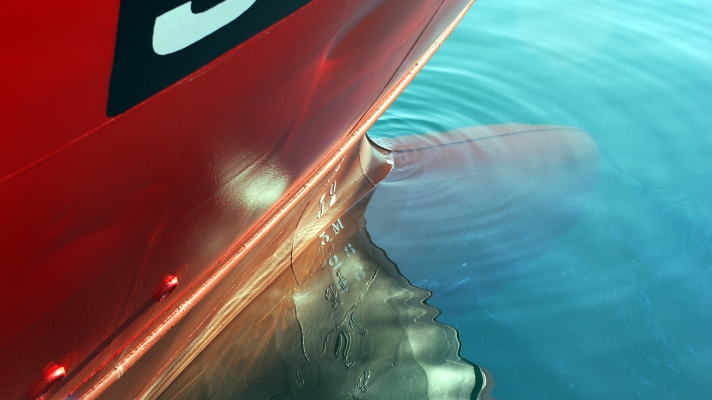The “challenge” is a key principle of good bridge resource management (BRM). In The Nautical Institute’s latest Mars Report, a bulk carrier grounded because neither pilot nor bridge team applied this principle.
The Nautical Institute gathers reports of maritime accidents and near-misses. It then publishes these so-called Mars Reports (anonymously) to prevent other accidents from happening. A summary of this incident:
A bulk carrier, loaded to 12.65 metres draught, arrived at its destination and took a pilot for port entry. The bridge team consisted of the master, the pilot, and a helmsman.
The officer of the watch (OOW) had left the bridge for other duties. When the pilot arrived on the bridge, there was a brief exchange of vessel information between the master and the pilot. The pilot called for hard to starboard, as the vessel was too close to the pier and there would not be enough time for it to safely make its approach on the current heading. However, he issued helm orders without communicating to other bridge team members his plans for an alternative approach to the pier.
Because the tide was turning, the pilot initiated a circular manoeuvre that included numerous and varied course and speed alterations to position the vessel further to the east. This was intended to give the vessel more time and distance to set up its approach to the pier.
Also read: Expedition cruise ship Ocean Explorer grounds off Greenland
Once the vessel had passed the apex of its circular manoeuvre, it was making good a course of 160 degrees. The pilot’s priority was now to slow the vessel before making the approach to the northern pier. He ordered both attending tugs to make their lines fast fore and aft and begin slowing the vessel down while gradually turning to starboard.
At this time, the vessel’s speed over ground was between 6 and 7 knots. The pilot was not monitoring the radars or ECDIS. Some minutes later, the vessel ran aground while making about 3 knots. The bridge team did not realise immediately what had happened. Shortly thereafter, the pilot checked the radar for the first time and realised the vessel was aground.

The vessel was refloated at the next high tide with tug assistance. No damage to the vessel or pollution was reported.
Investigation findings
The official investigation found, among other things, that although there had been a brief exchange of basic vessel information (horsepower and stopping capability) between the master and the pilot, there was no exchange of passage plans or discussion of the approach to the berth. The pilot did not discuss his intended circular manoeuvre to reposition the vessel for its approach to the port, and the master did not ask about the pilot’s intentions.
Furthermore, the master did not communicate with the pilot the information that he was gathering from the ECDIS and radar, including course, speed, and the rapidly approaching depth contour on which the vessel grounded. Information exchange throughout the pilotage operation was limited to the pilot’s helm orders. The pilot did not request feedback from the bridge team, and none was offered.
Also read: Language pilots sidelined bridge team during grounding of Ever Given
Advice from The Nautical Institute
- Without electronic validation or input from other bridge team members, even an experienced navigator can make errors that can lead to bad outcomes if left uncorrected.
- The “challenge” is a key principle of good bridge resource management (BRM). When one member of the bridge team sees a developing dangerous situation, it must be communicated to the person having the con.
- In this case, the ECDIS shading was set to depict anything shallower than 20 metres in dark blue, to differentiate it from deeper waters, which were identified with light blue. Had waters with a depth of 10 metres and less been shaded with dark blue and marked distinctly as a no-go zone, the vessel’s relatively rapid approach to the 10-metre-depth contour would have been more apparent.
Also read: USCG: Lack of situational awareness and poor BRM caused Ever Forward grounding
Mars Reports
This accident was covered in the Mars Reports, originally published as Mars 202338, that are part of Report Number 370. A selection of the Mars Reports are also published in the SWZ|Maritime magazine. The Nautical Institute compiles these reports to help prevent maritime accidents. That is why they are also published (in full) on SWZ|Maritime’s website.
More reports are needed to keep the scheme interesting and informative. All reports are read only by the Mars coordinator and are treated in the strictest confidence. To submit a report, please use the Mars report form.
Also read: Failing to question the pilot results in vessel grounding








